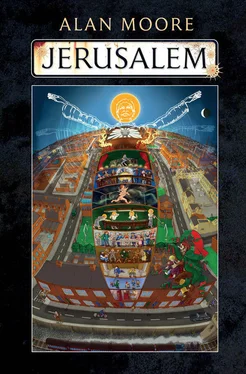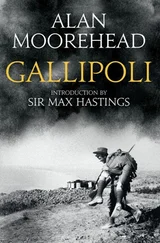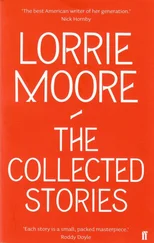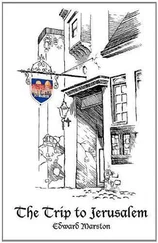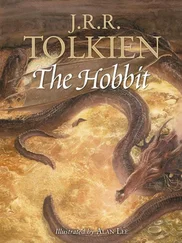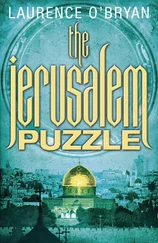His perusal of the exhibition thus far had arrived now at another of the concentration-gallery’s corners where continuing necessitated a right quarter-turn before commencing his traverse of the day-nursery’s east face, a modernistic climbing wall on which his sister’s works were untrustworthy handholds standing between mental equilibrium and intellectual freefall from a dizzy height. Touching the void he launched on the next leg of his precarious expedition into culture, with the first protrusion being item nineteen, Sleepless Swords . Relatively simple, a line-drawing in what might well have been lithographic crayon, it recalled the Daily Mirror editorial cartoons by David Low he just about remembered from his childhood, with stark moral points conveyed in easily deciphered symbols and the robust, unassuming style of a boy’s picture weekly. Alma’s version, neither topical nor unambiguous, portrayed a dark and saturnine man fast asleep in his four poster bed there at the hectic, bloody centre of a battlefield. From the proliferation of pikes and peaked helmets in the carnage circling the sleeper it appeared to be a conflict from the Civil War, which made the slumbering figure — clad, on close inspection, in black armour rather than pyjamas — very probably Oliver Cromwell. All around him frantic men impaled each other in the musket smoke and horses stumbled in their own intestines, sketched with soot and limned with gunpowder, while through it all the Lord Protector snored and snuggled. Mick was unsure if the scene implied that Cromwell was unconscious to the suffering of which he himself was the epicentre, or if, rather, all of this relentless butchery and these blood fountains were his dream.
Beneath this modestly sized composition, both the scale and stylings of exhibit twenty made it seem a mantelpiece upon which item nineteen merely rested. Much more complex than preceding offerings, the central image in fixed charcoal with bright orange accents was completely overwhelmed by an illustrative trim of Delft tiles, an area of carbon black and spitting flame contained within an ornamental fireplace. The picture at the heart of the arrangement was a landscape of stone chimneys and thatched rooftops, ruggedly evoked in crumbling strokes and all ablaze with licking tongues of nectarine, whereon two burning naked women danced ecstatically, long hair curling above them on the choking updraft. Striking as this pyrotechnic vista was with its restricted palette, it bore no perceptible relation to the seemingly far less incendiary continuity delineated on its tiled surround. Here, in dilutions of rich cobalt, was a linear progression of illuminated moments that commenced at the top centre with a square of solid midnight ink, as if to represent the darkness of the womb before the detailed childbirth of the scene thereafter. This was followed, clearly with an eye to its own cleverness, by a vignette of the now-infant boy sprawled on his mother’s lap beside a fireplace that was itself decorated with Delft tiling, chronicling events in the life of a ludicrously tiny Christ. The next depiction showed a sickly youth sat on a church pew between older men in eighteenth-century dress, eyes fixed on a lace handkerchief which hung suspended as if fluttering down from heaven. Tile by tile the illustrated life progressed, with here a mounted young man in a foggy grove confronted by a ragged girl with great luminous eyes, there the same man somewhat older as he led his steed across rough, snowy ground to an inviting hall that waited in the winter dark, its outline hauntingly familiar. After a few moments’ furrowed bafflement Mick recognised the edifice as Doddridge Church and realised that the serial drama he was following must be the life of Philip Doddridge. He read on through marriage, children and bereavement to a final view, just to the left of the frame’s upper middle, of a fragile man and woman as they lay together in a room with foreign furnishings, both ill, the man perhaps already dead as indicated by the unrelieved blue night of the next tile, its darkness now that of interment rather than conception. Only when he peered at the appended label in red biro which revealed the title of the piece to be Malignant, Refractory Spirits did he start to fathom a connection between its account of a dissenting clergyman and the two gleefully incendiary females, pirouetting on parched thatching and only constrained by their elaborate biographic border.
Starting to experience a mild conceptual concussion, Mick migrated a pace further south along the gallery’s east wall until he reached exhibit twenty-one. Identified in steadily deteriorating crimson as The Trees Don’t Need to Know , to his relief this was a single image, once more in a spindly portrait ratio and rendered in acrylics, blacks and whites and a glum rainbow of minutely differentiated greys. Flanked by some of the by now familiar anachronistically attired children, though he noticed that his own infantile semblance was not amongst them, loomed another of his sister’s horrors. Terrifying travesties of nature previously inconceivable were, he acknowledged, for some reason something which she’d always been particularly good at since she’d made her reputation one tentacle at a time, adorning all those S.F., fantasy and horror paperbacks during the 1980s. This particular grotesque appeared to be a really horrible variety of sea-serpent, disastrously released into a winding urban river very similar to the Nene, where there was clearly insufficient room for it. Rearing from slow and murky waters into the nocturnal black, atop a wavering neck thick as a water main, an elongated skull like a Gestapo staff-car sprang the bonnet of its upper jaw to bare appalling shipwreck teeth, snapping in bellicose frustration at the jubilant quintet of ruffians who for some reason levitated in the narrow picture’s upper reaches, each accompanied by several fainter copies of themselves. The creature’s face, with a coiffure of stinking waterweed and snail-flesh eyes that gleamed from sockets deep as wells, was the distorted countenance of an embittered and malign old woman, bellowing her hate and rage and loneliness into the night. It was another wildly inappropriate Enid Blyton illustration, as was item twenty-two just to the right of it.
Titled Forbidden Worlds in scrawl that paled to an unpleasant serum pink the further to the right it got, this, like its predecessor, was a study in acrylics with a silent movie colour scheme, albeit this time in landscape proportions. It portrayed a barroom scene as told to Hogarth or Doré by a mid-bender Edgar Allen Poe, a world of screaming abdabs where he was obscurely pleased to find his toddler self had made a reappearance. Still in his plaid dressing gown he cowered with the other small boy from the earlier paintings at the picture’s front, behind a massively rotund and gaudy form which, even from the rear, could only be the late, lamented local troubadour Tom Hall. The bar beyond, transparently what the two little lads were sheltering from, was populated by a temperance campaigner’s nightmare, an inebriate demonology. To one side a distraught and weeping man apparently made out of boards had deep runes gouged into his arm by the belligerent knife-wielding female holding him, while nearby yet another wooden man writhed half-emerged from the room’s floor, trodden back down by jeering hobnailed drunks. The ghastliest of the assembled barflies wore a toothless mouth across his forehead, mucous bubbling up in the inverted nose beneath and dazed eyes blinking from his jowls. A purgatory with an extended license, an eternal lock-in or an hour never ending that was anything save happy: could this really be the way that his teetotal sister thought of public houses, as menageries of horrid cruelty and impossible deformity? Although when he considered the pubs Alma had frequented he conceded that she had a point. He took another short step to his right and almost toppled headlong into the obliterating depths of item twenty-three.
Читать дальше
